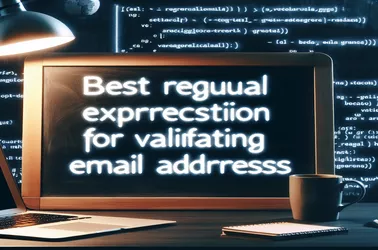Adding PHP message sending capability to your website is crucial, regardless of whether you're creating a contact form or overseeing a sizable user base. From the straightforward mail() function to powerful utilities like PHPMailer, this article covers a variety of techniques. Performance optimization, HTML message formatting, and SMTP configuration will all be covered.
With PHP, you may dynamically link individual JavaScript files to HTML forms so that just the scripts that are required are loaded. By using this method, performance problems and failures brought on by loading many scripts are avoided. The use of PHP logic, such as switch statements and if conditions, allows developers to control which scripts are included depending on the form under consideration.
Using PHP PDO to handle an SSL negotiation packet issue in a Dockerized Laravel application with PostgreSQL can be quite annoying. Although connections may establish at first, subsequent requests often fail.
Ensuring that Excel files open in Excel without first being saved or viewed in a browser requires correct setup of the Content-Type and Content-Disposition headers. You can direct the browser's handling of the file by properly setting these headers.
It is essential to prevent SQL injection in PHP in order to protect your database from malicious assaults. Application developers may effectively protect their apps by leveraging techniques like stored procedures, prepared statements, escaping user input, and ORMs.
This tutorial shows you how to retrieve YouTube video thumbnails using PHP and cURL. It covers obtaining the video ID from the URL, submitting queries to APIs, and managing the replies.
The particular use case in MySQL determines which of the two formats to utilize: DATETIME or TIMESTAMP. While TIMESTAMP corrects for UTC, making it perfect for event tracking, DATETIME is appropriate for storing consistent date and time information across time zones.
PHP array management calls for efficient element removal methods. It is ensured that elements are appropriately removed and array keys are reset by using unset() and array_values().
This article offers a number of regular expression-based methods for email address validation. Various techniques have been developed over time to guarantee accurate validation of email addresses. Through the usage of these techniques, developers can reduce errors and enhance user satisfaction.
After integrating a GoDaddy domain for WordPress with an iCloud+ Custom domain, SMTP configurations problems prevented emails from getting to their intended recipients. Attempts included using other port numbers, TLS instead of SSL, and different combinations of Apple ID credentials, app-specific passwords, and custom domain emails. The issue persisted even after utilizing the WPMailSMTP plugin and adhering to Apple's server settings. Using DMARC, DKIM, and SPF to ensure correct DNS settings can help keep emails from getting flagged as spam.
Error 500 is occurring when PHPMailer and Office365 are used together. SMTP can cause annoyance. Incorrect port numbers or server setups are frequent reasons. Make sure to use the right username and password for the SMTP authentication and enforce TLS 1.2 for secure communication. Setting these settings correctly in your script guarantees error-free email operation.
Sometimes SMTP plugin conflicts arise when you move your WordPress website to a different host; this can lead to significant failures and site outages. If email capability is lost because your SMTP plugin is not supported, there are other ways to get it back. Reliable solutions include configuring PHPMailer or integrating SendGrid or other third-party services. Furthermore, you can avoid these problems by making sure your server's settings are configured correctly.











